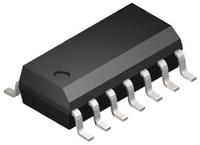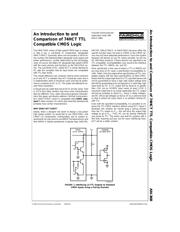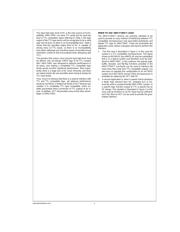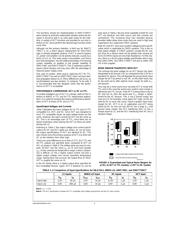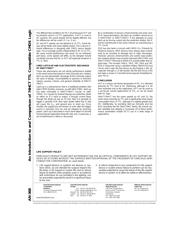下载

An Introduction to and
Comparison of 74HCT TTL
Compatible CMOS Logic
The 54HC/74HC series of high speed CMOS logic is unique
in that it has a sub-family of components, designated
54HCT/74HCT. Generally, when one encounters a 54/74 se-
ries number, the following letters designate some speed and
power performance, usually determined by the technology
used. Of course, the letters HC designate high speed CMOS
with the same pinouts and functions as the 54LS/74LS se-
ries. The sub-family of HC, called HCT, is nearly identical to
HC with the exception that its input levels are compatible
with TTL logic levels.
This simple difference can, however, lead to some confusion
as to why HCT is needed; how HCT should be used; how it
is implemented; when it should be used; and how its perfor-
mance compares to HC or LS. This paper will attempt to an-
swer these questions.
It should also be noted that not all HCTs are the same. That
is, HCTs from other vendors may have some characteristics
that are different. Thus, when discussing general character-
istics this paper will directly address Fairchild Semiconduc-
tor’s 54HCT/74HCT which is compatible with JEDEC stan-
dard 7. Other vendors’ ICs which also meet thisstandardwill
probably have similar characteristics.
WHY DOES HCT EXIST?
Ideally, when a designer sits down to design a low power
high speed system, he would like to use 54HC/74HC, and
CMOS LSI components. Unfortunately, due to system re-
quirements he may have to use NMOS microprocessors and
their NMOS or bipolar peripherals or bipolar logic (54S/74S,
54F/74F, 54ALS/74ALS, or 54AS/74AS) because either the
specific function does not exist in CMOS or the CMOS de-
vice may not have adequate performance. Since the system
designer still desires to use HC where possible, he will mix
HC with these products. If these devices are specified to be
TTL compatible, incompatibilities may result at the interface
between the TTL, NMOS, etc. and HC.
More specifically, in the case of where a TTL or NMOS out-
put may drive an HC input, a specification incompatibility re-
sults.
Table 1
lists theoutput drive specifications of TTLcom-
patible outputs with the input specifications of 54HC/74HC.
Notice that the output high levelof aTTL specified device will
not be guaranteed to have a logic high output voltage level
that will be guaranteed to be recognized as a valid logic high
input level by HC. A TTL output will be equal to or greater
than 2.4V, but an HCMOS input needs at least 3.15V. It
should be noted that in an actual application the TTL output
will pull-up probably to about V
CC
minus 2 diode voltages,
and HC will accept voltages as low as 3V as a valid one level
so that in almost all cases there is no problem driving HC
with TTL.
Even with the specified incompatibility, it is possible to im-
prove the TTL-CMOS interface without using HCT.
Figure 1
illustrates this solution. By merely tying a pull-up resistor
from the TTL output to V
CC
, this will force the output high
voltage to go to V
CC
. Thus, HC can be directly interfaced
very easily to TTL. This works very well for systems with a
few lines requiring pull-ups, but for many interfacing lines,
HCT will be a better solution.
AN006751-1
FIGURE 1. Interfacing LS-TTL Outputs to Standard
CMOS Inputs Using a Pull-Up Resistor
Fairchild Semiconductor
Application Note 368
March 1984
An Introduction to and Comparison of 74HCT TTL Compatible CMOS Logic AN-368
© 1998 Fairchild Semiconductor Corporation AN006751 www.fairchildsemi.com

